Vinh Phuc is a province in the northern key economic region, the gateway of Hanoi capital, near Noi Bai International Airport and the bridge between the northwestern provinces with Hanoi and provinces in Red River Delta, so the province plays an important role in the economic development strategy of the region and the nation.
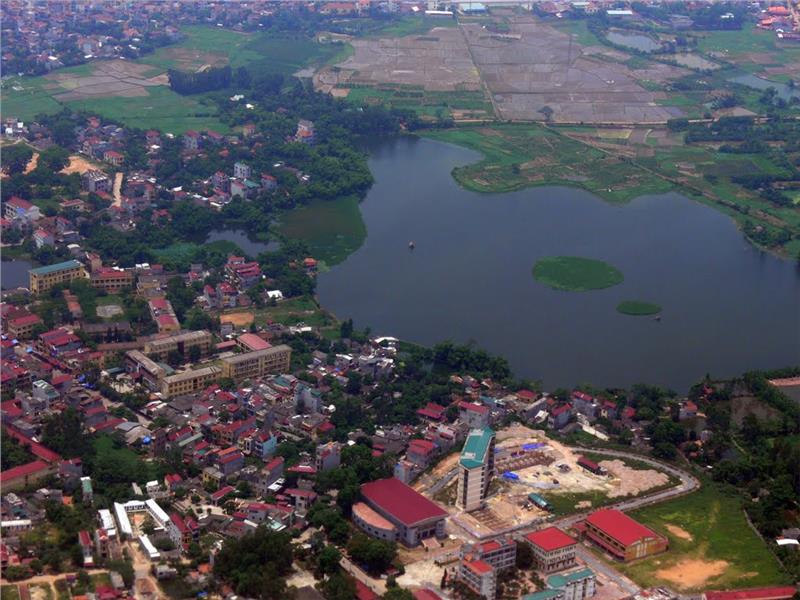
Vinh Phuc is located in Red River Delta, the northern key economic region and the Capital Region, borders Thai Nguyen and Tuyen Quang in the north, Phu Tho in the west, Hanoi in the east and south. The province is located in the National Route No.2, the railway Hanoi - Lao Cai and the highway Noi Bai - Lao Cai - Yunnan (China), a bridge between northern midland and mountainous region and Hanoi; adjacent to Noi Bai International Airport, through National Route 5 to Haiphong seaport and road no.18 to Cai Lan seaport. Thanks to the advantage of geographical and economic location, Vinh Phuc becomes an integral part of industrial development region of North Vietnam.
Vinh Phuc is located in the transition zone between the hilly midland and Red River Delta. Therefore, Vinh Phuc terrain in northwest is higher than that in southeast and is divided into 3 regions plain, midland and mountain. The mountainous region has the natural area of 65,500ha. The midland stretches from northwest to southeast and has the natural area of about 25,100ha. The natural area of the delta region is 33,500ha.
Vinh Phuc situates in the tropical monsoon climate. The average temperature is 23.2 0C - 250C, the rainfall is 1500 - 17000ml; the average humidity is 84 - 85%, the sunshine hour is 1400 - 1800 hours. Particularly, Tam Dao Mountain has cool climate year round (average temperature 180C) with lush mountainous landscape, suitable for tourism development. There are many rivers running through Vinh Phuc, but the hydrological system depends on two main rivers including Red River and Lo River. Red River runs through Vinh Phuc with 50km length. 35-kilometer long Lo River runs through Vinh Phuc with tortuous terrain and narrow rivers.
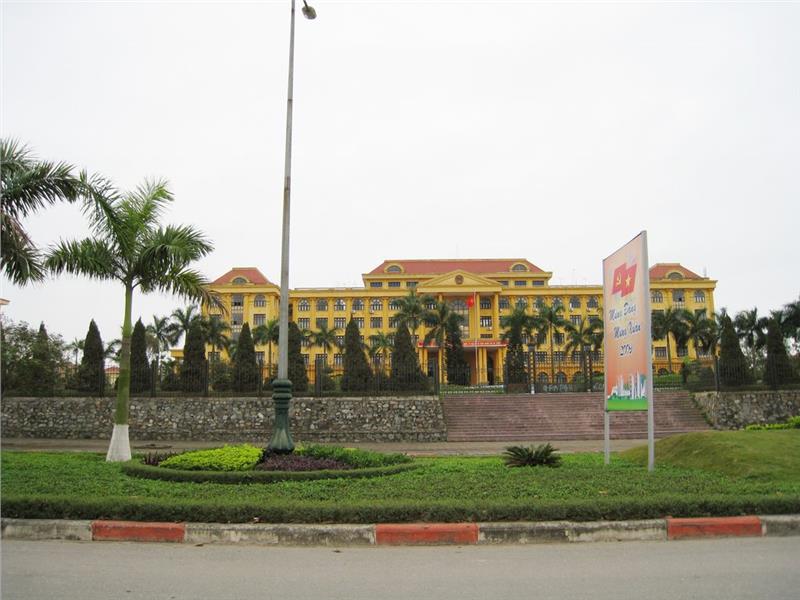
Vinh Phuc is the cradle of the ancient Vietnamese with famous Dong Dau archaeological relic. Vinh Phuc province was founded in 1950, due to a combination of two provinces of Vinh Yen and Phuc Yen. When incorporated, Vinh Phuc has the area of 1715km² and 470.000 people. On January 26, 1968, the Standing Committee of the National Assembly of Vietnam Democratic Republic issued Resolution No. 504-NQ / TVQH to merg the two provinces of Phu Tho and Vinh Phuc into Vinh Phu, Viet Tri City became the the provincial capital of Vinh Phu. The 10th session of the 9th National Assembly adopted a Resolution (November 26th, 1996) on the re-establishment of Vinh Phuc and Phu Tho. Vinh Phuc was formally re-established and put into operation from January 1st, 1997. Implementation of the policy of Party and State on the administrative boundary expansion of Hanoi, on August 1st, 2008, Me Linh district of Vinh Phuc province was moved to Hanoi.
Vinh Phuc has 10 administrative units including Vinh Yen City, Phuc Yen Town, and Districts: Binh Xuyen, Lap Thach, Song Lo, Tam Duong, Tam Dao, Vinh Tuong and Yen Lac. The provincial capital of Vinh Phuc is Vinh Yen city, located about 50km far from Hanoi and 25km away from Noi Bai International Airport.
The average population of Vinh Phuc in 2014 is appropriately 1.029,412 people, of which male population is 508.405 people accounting for 49.39% and female population is 521.007 people, accounting for 50.61%. The percentage of population in working age accounts for 60%, the percentage of trained labor is 63%, the percentage of people working in state-own companies accounts for 8,2%, working outside the state companies accounts for 86.6%. Currently, there are 7 ethnic groups living together in Vinh Phuc province as Kinh, San Diu, Dao, Cao Lan and Muong.
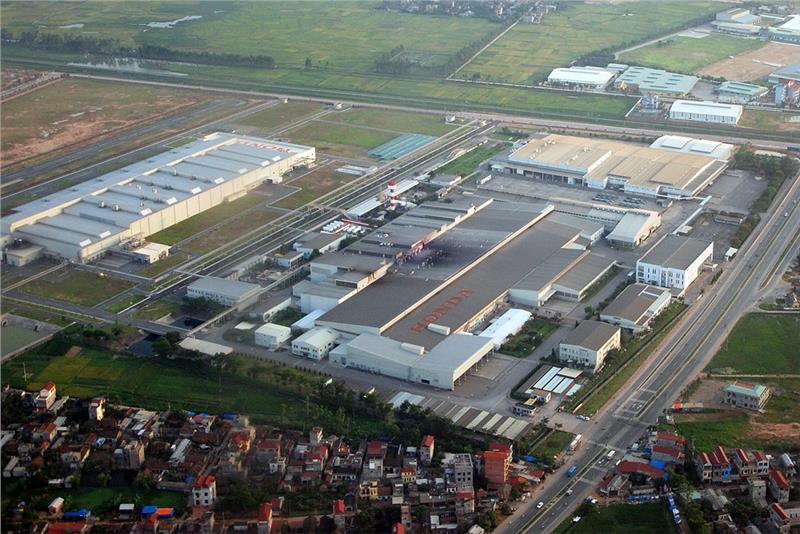
Vinh Phuc situates in the northern key economic region, is approved to build 20 industrial zones and 41 industrial clusters in the development projects of Vinh Phuc until 2020 and orientation until 2030. From a purely agricultural province, Vinh Phuc has become the province with the industrial production value, the leading automobile and motorcycle production center in the key economic region of North and the whole country. The system of technical infrastructure is invested and upgraded following the modern trend. The fields of education, health, culture and information have changed dramatically; national security is enhanced, social order and safety are maintained. Average economic growth reaches 17.24%, the state budge increases rapidly, from 100 billion dong in 1997 to 18.596 billions in 2013.
In industrial development, the province has taken the breakthrough solutions, from a province has only an industrial zone, now it has established 20 industrial zones with 6,000 ha size. Vinh Phuc's workforce is abundant accounting for over 60% of the total population which is mainly young workers with cultural knowledge and innovative spirit to acquire engineering and advanced technology. In recent years, the strong economic development, especially in the industry has become the environment to improve skills for workers.
In 2011, the province established 43 projects of socio-economic development and development planning sectors. The province now has 35 urban projects with a total area of 2.227ha. Vinh Phuc is striking to build into a province with all basic elements of an industrial province in 2015 to become an industrial province, one of the tourism service centers, in the region and the country, with the resorts of international standards in 2020 and become Vinh Phuc city in the 20s of this century. The average GDP growth rate in 2011 - 2020 reaches 14 - 15% / year of which the period 2011 - 2015 reaches 14 - 15%, the period 2016 - 2020 reaches 14 - 14.5%. GPD per capita in 2015 achieves 3.500 - 4.000 USD and in 2020 reaches about 6.500 - 7.000USD.
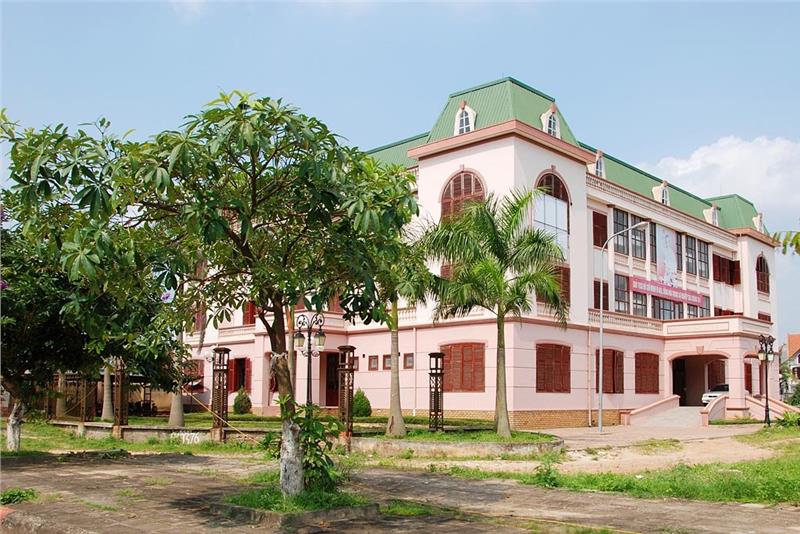
The field of education, population, employment and poverty reduction, health care and other cultural activities are also achieved many significant results, contributing to the the sustainable development and gradually improving the material and spiritual life of the people. By the end of 2013, the poverty rate was 5.0%; the percentage of trained labors was 59%; the percentage of malnourished children under 5 years old was 11.9%; the number of doctors/ 1 thousand populations was 7.5 doctors. Implementation of new rural construction of the province achieved high results ranked the second after Hanoi.
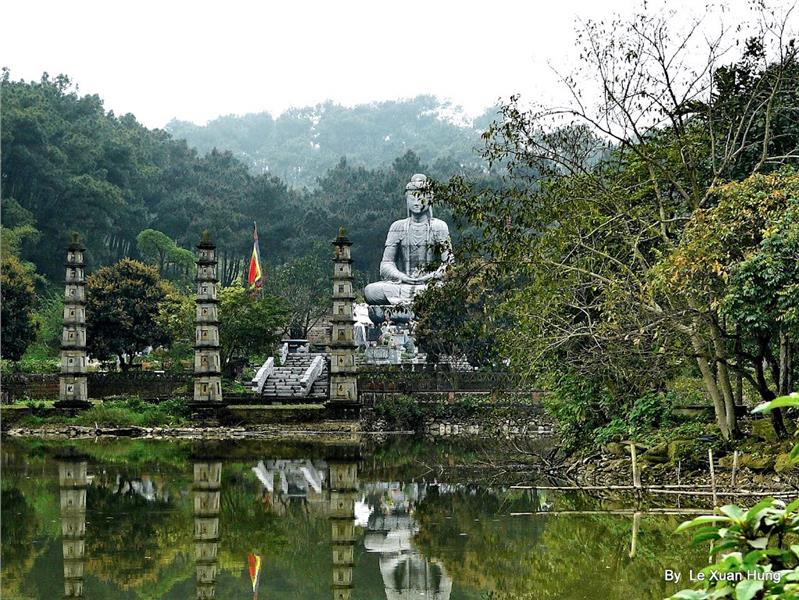
Vinh Phuc is a land where the ancient Vietnamese lived thousand years ago. Through the ups and downs, impact of nature, people and land here has created a rich heritage and distinctive culture. It is also an invaluable asset of Vinh Phuc. According to many researches, Phu Tho is the legendary hill of "Me Tien" (Fairies) and Vinh Phuc is the legendary land of "Cha Rong" (Dragon).
During the period of Hung Kings, Van Lang country had 15 divisions, of which Van Land was the major division, the center of Van Lang situated on the confluence of three rivers Thao River, Da River and Lo River. The territory of Van Lang stretched on 2 banks of Thao River, Red River, from Ba Vi Mountain to Tam Dao Mountain. Thus, Vinh Phuc territory now lies in the ancient Van Lang. It it no coincidence when people said, Phu Tho and Vinh Phuc are ancient lands, the first home to the Vietnamese people. In addition to the archaeological relics such as Lung Hoa and Dong Dau relics, Vinh Phuc is also a land with rich cultural - historical relics creating a unique feature.
Bordering the Hanoi capital to the northwest, Vinh Phuc is one of "tu tran" - the screen of Thanh Long ancient capital, belongs to the cultural transition zone from the northern mountainous region to Red River Delta Vietnam. Vinh Phuc is proud of the hometown of Ha Ba Trung, General Tran Nguyen Han, Nguyen Dang Phuong - the leader of peasant uprising, Doi Can, Nguyen Thai Hoc.
The traditional cultural values saved through cultural and historical relics contributing an important rile in attracting tourists. There are 967 cultural-historical relics including 288 national relics, of which Tay Thien relic, Binh Son tower, Tran Nguyen Han Temple, Tho Tang communal house, Huong Canh communal house, Ha Tien Pagoda, Dong Dau archaeological relic. In addition to rich tangible heritages, Vinh Phuc also has diverse intangible culture with the high tourism value. That is customs and habits, festivals, folk games, cultural arts, poetry...
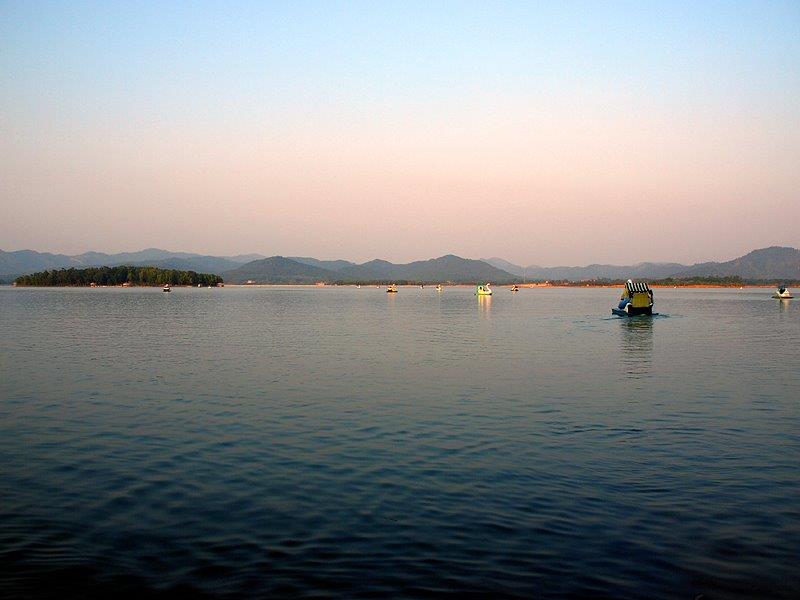
Nature has favorably bestowed Vinh Phuc for many fascinating scenic landscapes as Tay Thien, Truc Lam Monastery (one of three largest monasteries in the country with Dalat and Yen Tu), Tam Dao, Trung Sisters temple, Binh Son tower, etc. There are also over 500 historic - cultural relics including 67 national relics. In addition, Vinh Phuc has many lakes in the beautiful location more attractive than the other lakes in North Vietnam. Ecological environment condition of Vinh Phuc is still unspoiled features. So Vinh Phuc tourism has advantageous conditions to develop types of tourism.
Truc Lam Tay Thien Monastery was built on the old foundations of Thien An Thien Tu, the great place of the Ly Tran dynasty, at altitudes from 250m to 300m above sea level, in the Tam Dao - Tay Thien mountain. The main hall is 17m high with 673,2m2 area (20.4 x 33m). Inside the hall, there are only 4 pillars supporting the roof, so the space of the hall is high, wide, and bright. Truc Lam Monastery is a magnificent architectural works bearing the Buddhism style. Unlike the ancient pagodas in Vietnam in the 16th and 17th century, Truc Lam Tay Thien bears the traditional style in the harmony with the modern, still keeps the typical characteristics of a Buddhist temple imbued with national cultural identity but meet the spiritual needs of people.
Tam Dao mountain appeals tourists by the rich flora and fauna and the stunning French architecture. Visiting Tam Dao, you can visit Tam Dao National Park, siver stream, or on the TV tower in Tam Dao, Ba Chua Thuong Ngan Temple, Temple of Saint Tran ... On the road from Tam Dao to Tay Thien, you can drop by Den Co, Den Cau at the foot of Tam Dao. Dai Lai Lake is a large artificial lake, situated at the foot of Tam Dao mountain, Ngoc Thanh commune, Phuc Yen town, about 40km from Hanoi. Here tourists can walk, go sightseeing, fishing, hiking or visit village of San Diu ethnic people to listen to Soong Co singing and enjoy their delicacies. In addition, tourists can visit traditional craft villages here such has Huong Canh pottery village and Me Linh flower village.
Festival

Like other provinces and cities in Vietnam, festivals in Vinh Phuc are abundant. Each festival has its own features and meaning, but all of them are associated with the life of people. Typically, there is Tay Thien festival. Tay Thien still preserves pagodas worshiping the Buddha built under the reign of Ly Dynasty along with the pagodas of Mother Goddess Lang Thi Tieu, Cau Be, Co Be, etc. stretching from the foothills up to the top mountain.
Local people co-worshiped Buddha and Mother in their belief, so Tay Thien festival is extremely rich. Tourists to Tay Thien often believe in the sacredness of the Mother Goddess; they pray for children, good luck, and prosperity in the spring and then return offerings at the end of year. Therefore, Tay Thien historical relic and landscape area has never been deserted. Tay Thien festival reflects an era in the history of building and defending the country. Through many ups and downs, this festival has been preserved and developed in new cultural life. Although Tay Thien festival now has many changes compared to the tradition and added modern elements, its cultural values and spiritual significance are still reserved and spread in the community.
Phu Lien festival: Phu Lien village belongs to Dong Tinh commune, Tam Duong district worshiping Ngoc Kinh - the daughter of a General under Hung King. In year 40, she along with her husband and two sons participated in Me Linh uprising against To Dinh and all were sacrificed in year 43. Ms. Ngoc Kinh is worshiped in temple behind Phu Lien pagoda, so it is called Chua temple or Duc Ba temple. Her husband and son are worshiped in Thinh Temple or Duc Ong Temple. Her youngest son is worshiped in Huc communal house. To commemorate her family, every year, the villagers of Phu Lien hold 2 major parties and festivals. The festival is held from the 8th to 10th day of the first lunar month. In the party, it must have game "casting statue" or so-called "casting Buddha".
